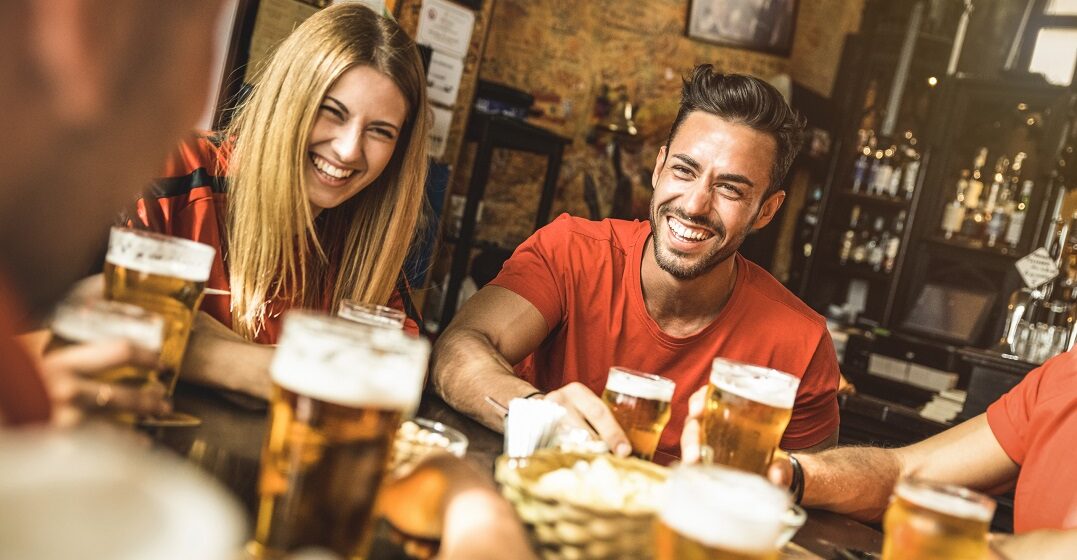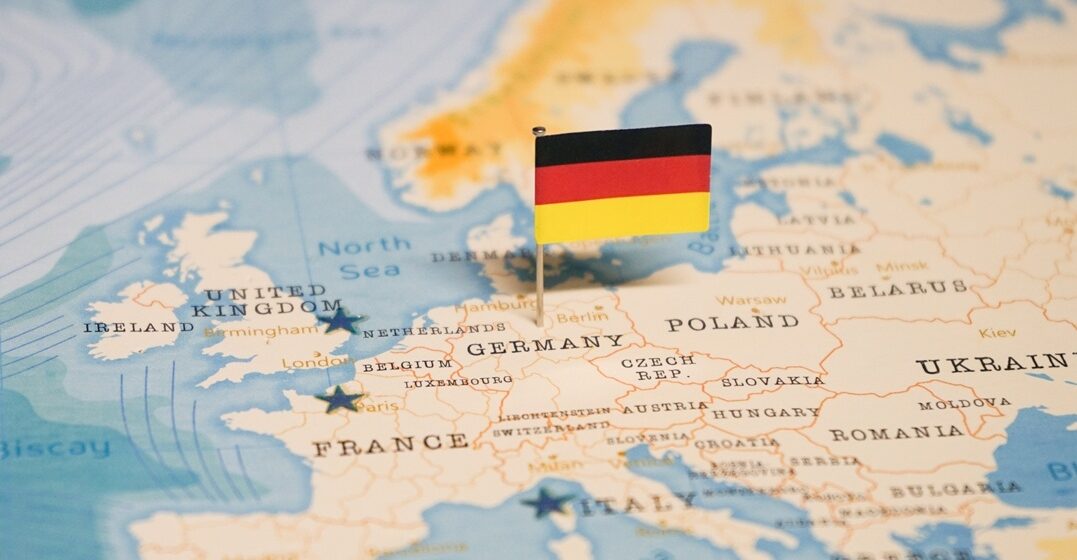Prost! Learn the major types of German beer

German beer is famous all over the world and the culture surrounding it is intimately bound to the country’s national identity. Who can think of Germany without conjuring up images of Oktoberfest and beer halls full of clinking beer glasses? There are over 1300 breweries in Germany, 700 of which are located in Bavaria, that continue the oldest uninterrupted brewing culture in the world. On average, 107 liters of beer are consumed per person in Germany annually, so it is undoubtedly an integral part of German life.
So, what are the most popular German beers and what does German beer taste like? Here is our guide to the essential types of German beer! Alongside each variety, you will find our suggestions for popular and widely available beers that you should try while in Germany, as well as the famous German breweries that produce them.
Learn languages at your pace
Pale Lagers
Pilsner
Pilsners are the most popular type of beer throughout most of Germany, and indeed throughout the world. It is named after the Bohemian city of Pilsen, in the west of modern-day Czech Republic, where it is believed to originate. The original product was known in Czech as Plzenky Prasdroj or as it is known in German Pilsner Urquell (which means the original source of Pilsener). Pilsener is a bottom-brewed, pale, golden lager with a high hop content that gives it a fruity aroma and crisp refreshing taste.
Alongside the traditional Pilsner Urquell popular German pilsners include:
- Rothaus Tannenzäpfle, brewed by Badische Staatsbrauerei Rothaus in Grafenhausen, Baden-Württemberg
- Bitburger Premium Pils, brewed by Bitburger Brauerei in Bitburg, Rhineland-Palatinate
- Warsteiner, brewed by Warsteiner Brauerei in Warstein, North Rhine-Westphalia
- Veltins, brewed by Brauerei C&A Veltins in Meschede-Grevenstein, North Rhine-Westphalia
Helles
Helles (meaning pale in German) is a traditional straw-blonde lager that is the everyday session beer of Bavaria. With a milder, sweeter taste than a pilsner, it has a clean, malty flavor and a floral aroma. First brewed in the late nineteenth century at the Spaten brewery in Munich, Helles is now the star of the beer garden, and you will find it traditionally served in a Maßkrug, a glass tankard with a handle that holds a liter of beer.
Try:
- Augustiner Lagerbier Helles, brewed by Augustiner-Bräu München in Munich, Bavaria
- Spaten, brewed by Spaten-Franziskanerbräu in Munich, Bavaria
Kölsch
Kölsch is a regionally protected style of beer from Cologne, much like champagne is to the Champagne region of France. With a long history in the city, this is a dry, top-fermented beer with a light fruity aroma and taste, accented with a nice hoppy bitterness. It is traditionally served in a small Stange (rod) glass of between 100 and 200 ml capacity.
Try:
- Gaffel Kölsch, brewed by Privatbrauerei Gaffel Becker & Co. in Cologne, North Rhine-Westphalia
- Früh Kölsch, brewed by Brauerei Früh am Dom in Cologne
Learn languages at your pace
Dark lagers
Dunkel
Before it was overtaken by the popularity of Helles, Dunkel (dark) beer was the go-to everyday beer of Bavaria. In color, Dunkelbier ranges from mahogany red to deep brown and has a malty flavor, with a slight sweetness that can bring out undertones of fresh bread, chocolate, nuts, licorice or caramel. With only a moderate bitterness, this beer is a great match for hearty Bavarian cuisine. While Helles may have overtaken Dunkel in overall consumption, it is certainly worth seeking out the Dunkel beers produced in the many small local breweries that are dotted around southern Germany.
Try:
- Krombacher Dark brewed by Krombacher Brauerei in Kreuztal, Siegen, North Rhine-Westphalia
- Warsteiner Premium Dunkel brewed by Warsteiner Brauerei in Warstein, North Rhine-Westphalia
- Weltenburger Kloster Barock Dunkel brewed by Klosterbrauerei Weltenburg in Kelheim, Bavaria
Altbier
Altbier (old beer) is one of few German ale styles. It’s a type of top-fermented beer that’s been widely brewed in the Lower Rhine and Westphalia regions, especially around Düsseldorf, since the nineteenth century. In Germany this style of beer predates the more common style of bottom-fermented light lager that now dominates the German market, and is instead somewhat similar to UK ales. Altbier presents a light straw to dark copper color, with a light fruity, dry flavor.
Try:
- Uerige Altbier brewed by Uerige Brauerei in Düsseldorf, North Rhine-Westphalia
- Füchschen Alt brewed by Die Brauerei "Im Füchschen", Düsseldorf
- Bolten brewed by Bolten GmbH in Korschenbroich, North Rhine-Westphalia (the oldest Altbier brewery in the world)
Schwarzbier
Schwarzbier (black beer) is a black lager similar to stout that gets its dark color and chocolate or coffee flavors from the roasted malts. It’s bottom-fermented with a dry and moderately bitter taste. Schwarzbier was very popular in East Germany, but virtually unknown in the West during the years when Germany was divided. However, since reunification, Schwarzbier has seen a major surge in popularity throughout the country, cutting into sales of western Altbier.
Try:
- Köstritzer Schwarzbier brewed by Köstritzer Brauerei in Bad Köstritz, near Gera, Thuringia
- Störtebeker Schwarzbier brewed by Störtebeker Braumanufaktur near Greifswald, Mecklenburg-West Pomerania
Bock
German Bock beer is a style of strong bottom-fermented lager, lightly hopped with a sweet and malty taste with notes of caramel or nuttiness. Bock is believed to originate in the Lower Saxon town of Einbeck in southern Lower Saxony, from which it derives its name. There are many kinds of Bock beer to try, including Urbock, Doppelbock, Maibock, Eisbock, Hellesbock and Weizenbock. Be careful though, because Bocks are a good bit stronger than your typical beer!
Try:
- Paulaner Salvator brewed by Paulaner Brauerei in Munich Germany
- Ayinger Celebrator brewed by Ayinger Brauerei in Aying, Bavaria
- Weihenstephaner Korbinian brewed by Bayerische Staatsbrauerei Weihenstephan in Freising near Munich
Wheat beer (Weißbier/Weizen)
Weißbier (white beer) or Weizenbier (wheat beer) is one of the classic Bavarian beer varieties. It’s made from a high proportion of malted wheat relative to barley malt (usually 50-70%). Your typical Bavarian Weißbier is a Hefeweizen, literally “yeast wheat”, which is the unfiltered variety. It is a pale cloudy amber color with a dry palate and has an enticing aroma that may bring cloves or bananas to mind. Kristallweizen is a filtered, and therefore less yeasty variation of Hefeweizen, though it still maintains much of the same citrus profile.
Often grouped together with Weißbier is the Berliner Weiße, though with a lower proportion of wheat malt, it is not considered a true Weißbier. This sour beer made in Berlin is lower in alcohol and often mixed with a flavored syrup such as raspberry or woodruff.
Try:
- Franziskaner Weißbier brewed by Spaten-Franziskanerbrauerei in Munich, Bavaria
- Weihenstephaner Hefeweißbier brewed by Bayerische Staatsbrauerei Weihenstephan in Freising, Germany
- Erdinger Weißbier Kristallklar brewed by Erdinger Weißbräu in Erding, near Munich, Bavaria
- Berliner Kindl Himbeere Weiße brewed by Berliner-Kindl-Schultheiss-Brauerei in Berlin
Radler (shandy)
A Radler, meaning cyclist in Bavarian German, is a mixed beer drink (Biermischgetränk) sometimes referred to as Alsterwasser or Alster in Northwest Germany. It’s typically made with half beer and half soda, thought to date back to the nineteenth century. Although Radler was traditionally home-mixed, ready-made cans and bottles of Radler are now available throughout the country. Its lower alcoholic content makes it a popular refreshing summer afternoon drink.
Try:
- Krombacher Radler brewed by Krombacher Brauerei in Kreuztal, Siegen, North Rhine-Westphalia
- Warsteiner Radler brewed by Warsteiner Brauerei in Warstein, North Rhine-Westphalia
- Veltins Radler brewed by Brauerei C&A Veltins in Meschede-Grevenstein, North Rhine-Westphalia
Prost!
Now that you are familiar with Germany’s many varieties of beer, you’ll surely be excited to try them next time you are in the country. Whether tipping up a tankard of Weizen at Munich’s Oktoberfest or sipping a sour in Berlin, there is no shortage of great beers to try and famous German breweries to visit!













